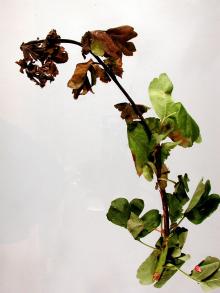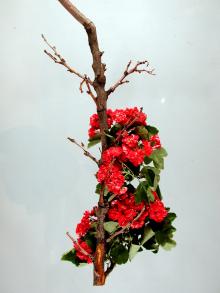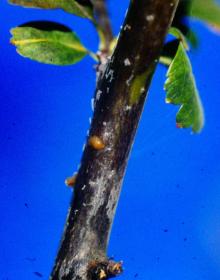See:
Pear (Pyrus spp.) - Fire Blight
Cause Erwinia amylovora, a bacterium. It overwinters in cankers on infected trees and is spread by insects, pruning tools, and splashing rains. Fire blight also severely attacks apple, cotoneaster, photinia, pyracantha, quince, and mountain ash. It usually goes unnoticed on ornamentals such as cotoneaster, hawthorn and pyracantha. Flowers, vigorously growing shoot tips, young leaves, and wounds can be infection sites.
Symptoms A necrotic blight of the flowers and rarely shoots. Blossom blight is usually inconspicuous and may go unnoticed. Flowers are at first light brown and may have droplets on them but then turn black and dry up. Infected shoots display blighted blossom clusters and characteristically purple canker surfaces. Freshly blighted shoots on older wood often ooze later. Brown leaves may cling to dead branches.
Cultural control
- Resistant species are available including Crataegus calvescens, C. canadensis, C. delasi, C. mollis, and C. pulchra.
- Remove and destroy infected tissues.
Chemical control
- Dormant season for holdover cankers.
- Bordeaux 8-8-100. O
- Prebloom and bloom period.
- Arbor-OTC is registered for trunk injection, see label for details. Group 41 fungicide (antibiotic). 12-hr reentry.
- CuPRO 5000 at 1.5 to 5 lb/A but only up to 2 lb/A when new growth is present. Group M1 fungicide. 48-hr reentry.
Note Aliette and Areca are registered but are not recommended because control is too variable and it is not compatible with copper products.
Reference Van Der Zwet, T., Orolaza-Halbrendt, N., and Zeller, W. 2012. Fire Blight: History, Biology, and Management. APS Press/American Phytopathological Society.



